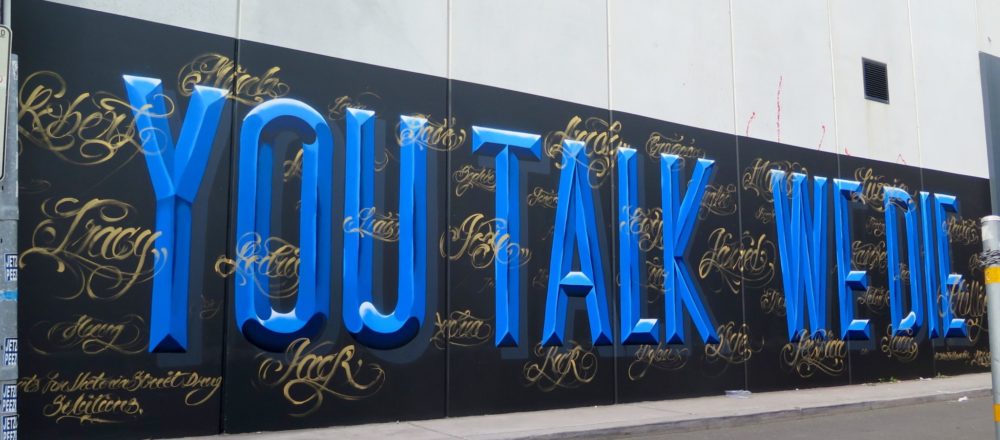Please note that this article contains links to reports, including Coroners’ Reports that may be graphic or distressing. Reader discretion is advised.
The Residents for Victoria Street Drug Solutions (RVSDS) is a group of Yarra residents who advocated for a medically supervised injecting centre (MSIC), also known as supervised injecting facilities (SIFs). SIFs are places where people can legally inject illicit drugs, supervised by healthcare providers and social workers. Australia only has one trial facility in Sydney, but there are 88 facilities worldwide.
In February 2017, the Victorian Coroner Jacqui Hawkins recommended a SIF be trialled in Richmond, Melbourne; however, the Victorian Government rejected the recommendation and up until very recently, opposed the legal supervision of illegal drug use. On 31 October 2017, Premier Daniel Andrews announced that the Victorian Government would be introducing legislation that week to “tackle skyrocketing ice and heroin deaths”, including a trial SIF in North Richmond.
Right Now talked to Judy Ryan, Secretary for RVSDS, about the campaign for an MSIC in Richmond, the impact of drug use on her community and the news that the facility would open in June 2018 at the North Richmond Community Health Centre.
Right Now: What is your response to the government’s announcement?
Judy Ryan: It’s amazing. It’s an unexpected change of mind by the government. Minister Martin Foley introduced the bill and it had its second reading on 1 November, and was passed on 14 December 2017.
It came out of left field, the government’s change of heart. My concern is that this has been on the agenda of Labor governments for decades but it is still a pretty contentious issue. If it gets up and the doors open in June, we want to make sure it’s accessible but also that no incoming government will ever consider closing it down. I’ve taken a lot of conservative MPs on tours of this area and spoken to them. A lot of them support it, when they’ve bothered to come out here. If you’ve got a pulse you can’t help but be touched by what you see.
How long has RVSDS been campaigning for a SIF in Richmond, Melbourne?
We started campaigning officially in October 2016. Last year, I ran as a single issue council candidate for the City of Yarra, advocating for a MSIC in Richmond. Two residents set up the Victoria Street Drug Solutions (VSDS) website [about the need for a MSIC] and developed a questionnaire for council candidates. That brought me together with them. After the election another resident joined us. He had lived in Kings Cross before and after the introduction of the facility and couldn’t believe the impact that it had on the community – within three weeks it was totally transformed. So on 16 November 2016, RVSDS was formed when we added “Residents” to VSDS.
A week or so later we got a call from Coroner Hawkins investigating the death of “Ms A” who died from an overdose in the Hungry Jacks on Hoddle Street. She asked us to make a submission: “the residents are the missing voice in this investigation”. She was determined to understand how the crisis was impacting the community. That kickstarted our campaign.
We now have 12 core members; we meet once a month and have community forums where we educate the broader community. Hundreds of residents support us, plus 1500 on social media.
There has been so much momentum since the Hawkins Coroner’s hearing; in eight months we had four Coroner’s reports all recommending a supervised injecting facility. These are learned people who have said this has to happen.
Why does RVSDS want a safe injecting facility, and why in Richmond?
North Richmond is one of the worst areas in Melbourne for drug use and overdoses. Coroner Audrey Jamieson’s Report in May 2017 identifies some stats about why this is considered such a problem area. Interestingly, two thirds of people who fatally overdose in the City of Yarra actually come from another local government area. It’s always been like this.
Coroner Jamieson’s report found that in 2016, the highest frequency of heroin overdose deaths occurred in the City of Yarra, and in the period 2012–2016, the City of Yarra had the highest proportion of overdose deaths in non-residential locations. Coroner Jamieson noted that the City of Yarra is “clearly a destination for heroin use among the broader Victorian population.”
JR: Ultimately, it’s about saving lives. It’s about saving people who haven’t died but who might – if they were in a MSIC they could be resuscitated. They can also be referred to support services.
Even if you don’t care about the deaths or the kids being traumatised, from an economic perspective it’s a no-brainer.
It’s about safety to the community and reducing the impact that overdoses and fatal overdoses have on families. I’ve had conversations with parents who have taken their kids to kinder and see it on the street. One person I knows said her six-year-old saw a man dead in the gutter and was so traumatised he couldn’t speak. The elderly are really struggling. The amenity of the area is being affected – Victoria Street looks disgusting and the drug users are zombie-like when they are overdosing. The human tragedy is in your face.
It’s also about freeing up our emergency services – they are being occupied by what’s happening down here and the elderly are concerned that if they have a fall or a stroke they may not get an ambulance. From an economic perspective, that is a key driver.
Once I saw in my back laneway an overdose where there were four appliances for one person. I’m not saying people who overdose don’t deserve emergency services, but if they had overdosed in a supervised facility there would be a nurse or doctor nearby to help. In Sydney, there was an 80% drop in ambulance call-outs about three weeks after the supervised facility opened.
Even if you don’t care about the deaths or the kids being traumatised, from an economic perspective it’s a no-brainer.
So, why has the Victorian Government changed its mind?
I think the residents’ group had a big role to play. People have been campaigning for 20 years for this and some fantastic groups have been advocating for it. City of Yarra councillors unanimously supported it. But until the residents got up in arms about it, that’s when there was a change.
Our intention was to put political pressure on the government with an election coming up. The government has now seen that it’s a human rights issue – people are dying in our streets in Melbourne, the “most liveable city”.
You can run all the campaigns you want but until the community says enough is enough, you won’t get traction. You won’t get people seriously looking at it.
It is never the wrong time to do the right thing. Doing the right thing is what the Victorian Government has decided to do. We don’t care why they changed their mind, we just want it to happen.
The trial is part of an $87 million Drug Rehabilitation Plan. Does the plan go far enough to support people suffering from drug addiction?
They are increasing funding to rehabilitation centres, increasing beds, it’s all really important change. You can’t just have one measure, you have to have the wrap-around services and that is what they have proposed. We want more facilities but let’s get this one up and see how it goes.
Is there anything you would like to add about the success of the RVSDS campaign this year?
Our work isn’t done. We want to be a major stakeholder in setting up the MSIC and be part of the referral committee. The health centre is a centrifugal force in the community. We want to be part of that. We don’t want it run by bureaucrats, we want open days and community input. We need to keep educating our community. We want to improve the amenity of the area once it’s open and reclaim our park and shopping strip. There is lots to do to make sure this facility is the success that we know it can be.



